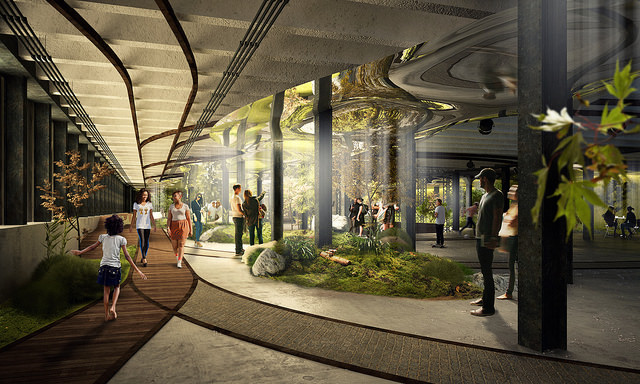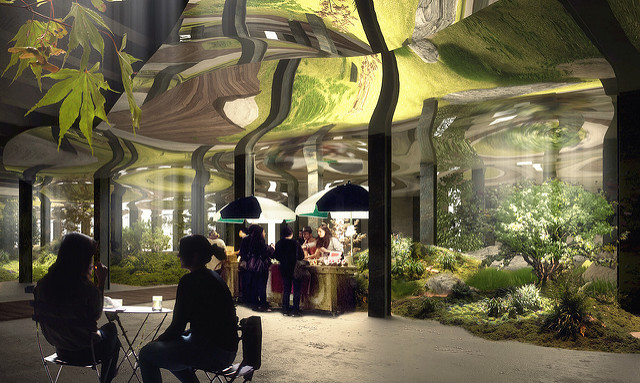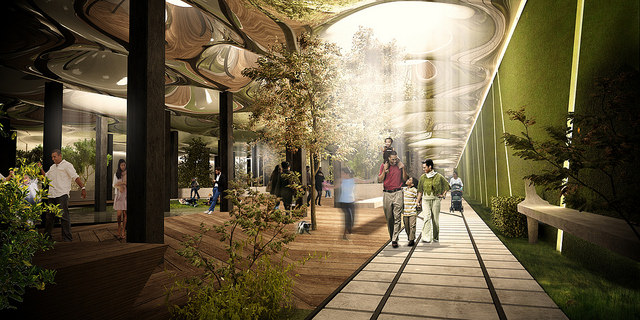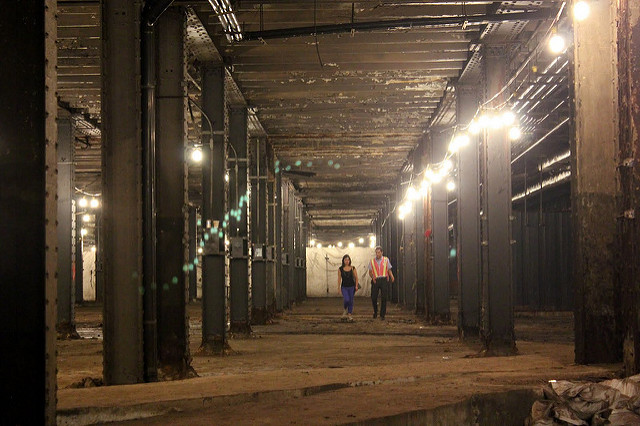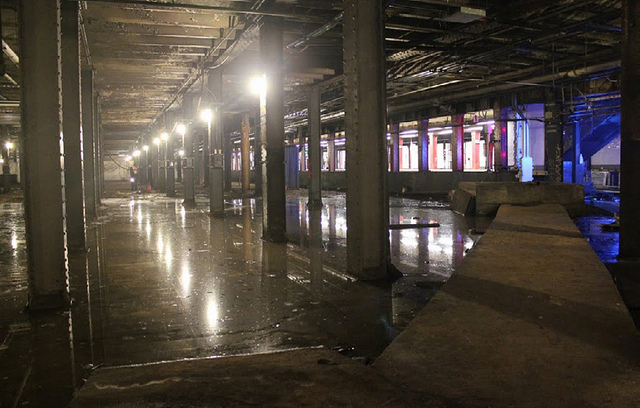The Lowline
In 2015, the New York City Economic Development Corporation (NYCEDC), in collaboration with the Metropolitan Transit Authority, requested expressions of interest for development plans involving the long-term lease of the vacant Williamsburg Bridge Trolley Terminal. The trolley terminal has been disused for more than 60 years. At approximately 60,000 sq. ft, the terminal runs underneath Delancey Street between Clinton and Norfolk Streets.
On 14th July 2016, it was announced that New York city planners had given planning approval to the Lowline, the world’s first underground park. The Lowline may become a major cultural attraction on a par with the city’s High Line public space.
The spectacular 1-acre underground public space will use cutting-edge solar technology to deliver natural sunlight underground and activate photosynthesis for year-round gardens. A system of ‘remote skylights’ will provide an area in which trees and grass can be grown beneath the city's streets. Artificial lighting will be used to supplement this on overcast days and at night.
The project aims to re-imagine public placemaking and community building while providing much-needed green space. The developers believe it could become an international model for the adaptive reuse and cultivation of abandoned underground spaces.
James Ramsey, Lowline co-founder and creator, said: "Every designer dreams of doing civic work that contributes to society and to the profession. Over the last 8 years, we just stuck to what we thought was a great idea that could make our city and our community better. We're thrilled to move ahead on designing and building a space that people will enjoy for generations to come."
NYCEDC say the Lowline developers must reach a fundraising target of $10 million in the next year and complete and present schematic designs for approval over the same time-frame in order to move ahead with the project.
In October 2015, the Lowline team opened the Lowline Lab, a live experiment to showcase and test its solar technology and subterranean horticulture, and also to test the cultural value of a year-round public space. Since its opening, it has attracted nearly 70,000 visitors and has hosted youth education visits for nearly 2,000 kids across New York City.
For more information, see Lowline.
Images and content courtesy of The Lowline.
[edit] Related articles on Designing Buildings Wiki
- 262 Fifth Avenue.
- 416-420 Kent, Williamsburg.
- Charles Waldheim - Landscape as Urbanism: A General Theory.
- Empire State Building.
- Flatiron Building.
- Groundscraper.
- Landscape urbanism.
- New York Horizon.
- Pier 55, New York.
- Skygarden, Seoul.
- The Big Bend, New York.
- The Oculus.
- Trinity River Park.
- Underground.
- Urban design.
- Vessel, New York.
Featured articles and news
UKGBC launch the UK Climate Resilience Roadmap
First guidance of its kind on direct climate impacts for the built environment and how it can adapt.
CLC Health, Safety and Wellbeing Strategy 2025
Launched by the Minister for Industry to look at fatalities on site, improving mental health and other issues.
One of the most impressive Victorian architects. Book review.
Common Assessment Standard now with building safety
New CAS update now includes mandatory building safety questions.
RTPI leader to become new CIOB Chief Executive Officer
Dr Victoria Hills MRTPI, FICE to take over after Caroline Gumble’s departure.
Social and affordable housing, a long term plan for delivery
The “Delivering a Decade of Renewal for Social and Affordable Housing” strategy sets out future path.
A change to adoptive architecture
Effects of global weather warming on architectural detailing, material choice and human interaction.
The proposed publicly owned and backed subsidiary of Homes England, to facilitate new homes.
How big is the problem and what can we do to mitigate the effects?
Overheating guidance and tools for building designers
A number of cool guides to help with the heat.
The UK's Modern Industrial Strategy: A 10 year plan
Previous consultation criticism, current key elements and general support with some persisting reservations.
Building Safety Regulator reforms
New roles, new staff and a new fast track service pave the way for a single construction regulator.
Architectural Technologist CPDs and Communications
CIAT CPD… and how you can do it!
Cooling centres and cool spaces
Managing extreme heat in cities by directing the public to places for heat stress relief and water sources.
Winter gardens: A brief history and warm variations
Extending the season with glass in different forms and terms.
Restoring Great Yarmouth's Winter Gardens
Transforming one of the least sustainable constructions imaginable.
Construction Skills Mission Board launch sector drive
Newly formed government and industry collaboration set strategy for recruiting an additional 100,000 construction workers a year.
New Architects Code comes into effect in September 2025
ARB Architects Code of Conduct and Practice available with ongoing consultation regarding guidance.
Welsh Skills Body (Medr) launches ambitious plan
The new skills body brings together funding and regulation of tertiary education and research for the devolved nation.
Paul Gandy FCIOB announced as next CIOB President
Former Tilbury Douglas CEO takes helm.






